The Economic & Geopolitical History of Burkina Faso Part 3: Strongman to Democracy to Terrorism Crisis
Our final Series on the Third Sahelian country ravaged by Terrorism
We are now in are final installment on Burkina Faso.
Part I was about the pre-colonial Mossi Kingdoms, French colonialism, and successive corrupt leaders that led to Sankara’s coup.
Part II was about Sankara, and separating fact from exaggeration. His best friend murdered him and then took over the country, which we are discussing today. Sankara’s advisors told Sankara that his best friend, Compaoré, was frothing at the mouth to kill him, but Sankara did not listen to his advisors.
Blaise Compaoré (Blez kohm-pah-oh-ray)(1987-2014)
Compaoré overthrew & killed his best friend in October 1987 and called Sankara a “madman” and an “autocratic mystic”. He then outlawed references, photos, and stories of Sankara. He killed university professors, journalists, and opposition figures who supported Sankara. He made Sankara’s family an enemy of the state and ransacked Sankara’s wife’s house. Unfortunately for Compaoré, despite Sankara’s policy mistakes, he was beloved by so many people that the teachers, activists, and journalists kept his memory alive.
Despite being called a “French puppet”, he did plenty of geopolitical actions that were not in France’s interests, but rather in the interest of France’s enemy - Muammar Gaddafi. Compaoré supported Gaddafi’s efforts in arming Charles Taylor take over Liberia in return for illegal diamonds and joined Gaddafi’s talk shop - The Community of Sahel–Saharan States.
Compaoré allowed elections in the 90s to get an IMF loan, and he won elections in 1991 (unopposed), 1999, and 2005. Then he changed the constitution to extend his term and won again in 2010.
He faced riots after France devalued the CFA franc, which helped Burkinabe firms’ export competitiveness but also made import prices double by 100%. He faced riots again for killing a popular journalist in 1999, then riots again in 2003, 2006, 2007, 2008, 2011, and 2014 for the last time. Many people have tried to coup him several times.
Compaoré ended Sankara’s state led, socialist growth model (which frankly wasn’t bringing growth in his 5 years due to the drought, low cotton prices, and debt default) and replaced it with a more market oriented framework.
Economic Liberalization: Between 1992 to 1999, Compaoré sold or partially sold state owned enterprises to investors in printing, brewery, plastics, drug manufacturing, motorcycle manufacturing, cement, sugar, hydrocarbons, urban transport, and textiles. I would say privatization has basically been unsuccessful as the investors who bought these government owned firms did not turn these companies into billion dollar exporting powerhouses. Out of all these firms, Burkina Faso’s best manufacturing is cement, and Burkina Faso only sells a paltry $82M as of 2022. The buyers of the government owned firms (SBMC, GMB, and SLM) were bought mainly by friends and family of Blaise’s political party.
IMF Structural Adjustment Programs: Compaoré inherited a virtually bankrupt state from Sankara. From 1991-2002, Blaise borrowed over $123M from the IMF and also borrowed from the World Bank and bilateral donors.
Economically, the structural adjustment program meant reducing fuel subsidies, removing price controls, liberalizing trade, creating pro-business investment codes, privatizing state owned enterprises and etc.
Frankly, the result was that many burgeoning Burkinabe industrial firms were destroyed without protection, Compaore’s friends ran the firms to the ground, or the firms are just stagnated. The price controls brought inflation and riots. Most of Burkina Faso’s foreign investment is in mining which is capital intensive (needs machines). It’s not very labor intensive (employing a significant number of people). As a result, unemployment was an issue.
Here are some silver linings during Compaore’s rule:
He vastly increased foreign investment in the country. During the era of Sankara, net foreign investment (inflows -outflows) was practically non-existent except one gold mine. However, the gold exports were still less than cotton exports during Sankara’s administration. At best net foreign investment inflows was 0.2% of Burkina Faso’s output. Compaoré revised the mining investment code to attract foreign multinationals, leading to a rise in foreign direct investment from Russian, Canadian, and British firms respectively (Nordgold, Semafo, Avocet, etc.). By 2009, gold surpassed cotton as the main export. However, gold mining is capital-intensive and employs fewer than 20K people. The result is that poor Burkinabe who need work, created their own artisanal mining “cooperatives”/firms, which employ 400K people and children are involved.
Improved agriculture (Marginally): Thanks to Compaoré taking zero-interest loans and grants from the African Development Bank and George Bush’s Millennium Challenge Corporation he was able to build more agriculture irrigation infrastructure and dams. This increased cereal yields in rice, corn, and wheat, but the yields are still awful. Burkina Faso still has not evolved from a “net food importing developing country”.
Received debt relief: For enacting the IMF’s policies, Burkina Faso received relief under the Heavily Indebted Poor Countries Initiative. Burkina Faso’s debt was cut in half from $2B to $1B.
Regardless of the reforms he made, agricultural yields were still subsistence, the country still borrows significantly even after debt relief because of its low national savings rate, and mining doesn’t employ many people. Hence the consistent protests. One huge protest was in 2011.
Unrest of 2011: Students, workers and civilians were complaining over cost of living, especially food price spikes. The military tried removing him, but failed. Shootings and looting happened in commercial spots. The protests stopped once his administration announced more subsidies for food and fertilizer. He also raised pay of the army so they wouldn’t kill him.
Post 2012, gold prices slumped and didn’t recover until mid 2020. Another huge riot occurred…
The 2014 Burkinabe Uprising & The Succession Crisis

Blaise was on the brink of revising the constitution and making his rule indefinite. The youth were not having it, so in 2014, there was a popular revolution that removed Blaise. Protests turned violent and government buildings were burned. Blaise fled to Ivory Coast. The trial on Compaoré for killing Sankara started in 2022. Compaoré did not appear.
Post revolution, there were four successive rulers in one year. After the uprising, a solider named Honoré Traoré (On-oh-ray, Tra-or-ray) was in power for one day, before the military contested his rule and backed military colonel, Issac Zida. However, the West, the Community of West African States, and the African Union pressured Zida’s military government to hand over power to civilian authorities and allow elections ASAP.
During this entire time, the citizens felt that their uprising was hijacked by the military exploiting the power chasm.
Issac Zida kowtowed and only kept power for three months before giving power to the former foreign minister Michel Kafando as a transitional civilian president (Kafando was part of Sankara’s government and also plotted to kill Sankara) and Issac Zida as prime minister. Kafando was in power for three months before he was ousted in a coup by a military leader named General Diendéré (D-jen-deh-ray), who was former strongman Compaoré's right hand man and one of the plotters of the murder of Thomas Sankara. He killed 14 people during this coup.
General Diendéré was only in power for eight days. The Burkinabe civil society institutions (labor unions, women, and traditional chiefs) mobilized to stand against Diendéré and the military arrested him. The result was that Michel Kafando came back in power until the November 2015 election was held.
During this entire time of instability after Compaoré was removed, radical jihadists have been plotting to take advantage of Burkina Faso’s weak state. The West warned Burkina Faso about Al-Qaeda in the Islamic Maghreb which was already in Mali & Niger.
Roch Marc Christian Kabore (2015-2022)
After finally having elections, Kaboré came into power. Kaboré was the first elected civilian head of state in 50 years. He won a second term in 2021.
His big domestic reform were reducing taxes in the investment code to receive more mining investment.
His big geopolitical reform was pivoting from Taiwan to China. Burkina Faso stopped recognizing the Republic of China (Taiwan) and switched to recognizing the People’s Republic of China (Mainland China) as “True China”. This is really important for Burkina Faso, as Chinese investment in Burkina Faso was virtually non-existent. Between 2000-2022, Burkina Faso only received two loans of ($0.16B). For comparison to Burkina Faso’s neighbors — Mali ($0.67B), Togo ($0.68B), Niger ($0.69B), Benin ($1.4B), and Ivory Coast ($4.3), and Ghana ($5.4B). Acknowledging China was Kabore’s way of trying to receive more Chinese capital.
Unfortunately he came into power at a horrific time.
The Extreme Jihadist Crisis

This crisis has been ongoing since August 2015, resulting in the deaths of 10K civilians and displacing 2M people. The North and East of Burkina Faso have experienced massive displacement. The jihadists murder people in gold mining villages and smuggle gold, raising hundreds of millions of dollars for their activities. They also attack industrial miners. For example, jihadists abducted workers from manganese mines and attacked the Canadian gold mining firm, Semafo, and kidnapping & killing workers. Additionally, terrorists killed citizens and foreigners at Burkinabe restaurants, mosques, hotels, and cafes too. Burkina Faso’s extremism issue differs from Mali’s and Niger’s.
How the Mayhem started:
The jihadist insurgency started externally. After the Algerian Civil war in 2002, radicals joined Al-Qaeda and became Al-Qaeda in the Islamic Maghreb (AQIM). AQIM attacked a United Nations compound in Algiers in 2007 and infiltrated Northern Mali. However, their terrorist attacks were relatively minor in North Africa in the 2000s. Then the insurgency expanded after the Libyan Civil War, where NATO helped rebels kill Gaddafi.
“Ever since the West assassinated Qaddafi, and I’m conscious of using that particular word, Libya has been completely destabilized. While at the same time it was the country with the most guns. It has become an arms cache for the region.” — Chérif Sy, Burkina Faso’s defense minister
Spread of Terrorism:
In Mali and Niger, the government failed to support the Tuareg Amazigh minority for decades. Some Tuaregs worked as mercenaries for Gaddafi in Libya. After Gaddafi’s death, Tuareg mercenaries left Libya with their extensive weapon stockpile to violently voice their grievances in Mali & Niger. Some Tuaregs were nationalists (MNLA), while others were radical Jihadists affiliated with AQIM (Ansar Dine). Burkina Faso’s President Compaoré tried diplomacy with the Islamists in Mali, but when that failed, he deployed 1000 troops to help France destroy the Tuareg state of Azawad in UN Operation Serval.
However, the battle turned to guerrilla warfare, spreading mayhem to Niger. France started a a new operation Barkhane, to stop this new terrorist offensive.
In 2016, AQIM affiliated terrorists started killing people in the capital in Burkina Faso. Islamic State of Greater Sahara (ISGS) attacked the city of Markoye.
Unlike Niger or Mali, in Burkina Faso, the main oppressed minority that is utilizing an extreme form of Islam to voice their grievances aren’t the Arabs or Tuaregs but are the Fulani.
Ibrahim Dicko, a Fulani iman, started a terrorist group. He spoke to oppressed people on the radio, criticizing the government for favoring the Mossi majority in capital while neglecting the Fulani herders with dying cattle in the desert North.
Dicko connected with the Fulani Macina Liberation Front in Mali, an ally of the AQIM-affiliated Ansar Dine. Inspired by Ansar Dine, Dicko mobilized supporters, creating the nation’s first indigenous jihadist rebel group - Ansar al-Islam or “Defenders of Islam”, which aligned itself with one of the fastest global terrorist groups, Jama’a Nusrat ul-Islam wa al-Muslimin (“Support group for Islam and Muslims” or JNIM), an Al-Qaeda Affiliate. Ansar al-Islam & JNIM started attacks in Northern Burkina Faso and Southern Mali. The leaders in these groups are either Tuareg, Fulani, or Arab.
Consequences
The Al-Qaeda affiliates started torturing, bombing, and attacking the country, including the French embassy. Over 1M children in Burkina Faso had their schools closed and over 6000 academic institutions were shut down in the country as of September 2023. Almost half of all closed schools in Central & West Africa where just in Burkina Faso.
France and affected Sahelian countries (Mali, Burkina Faso, Mauritania, Niger, Chad) - formed the G5 Sahel in 2014 to counter extremism, supported by America, African Union, France, and UN Security Council. In 2023, countries left the G5 Sahel alliance.
Donald Trump provided Burkina Faso $100M in security funding (night vision goggles, radio, body armor, vehicles) which is equivalent to 66% of Burkina Faso’s defense budget at the time.
Unfortunately, other affiliates of ISIS such as ISGS & Islamic State’s West African Province (ISWAP) are present in East Burkina Faso as of 2016.
France has killed jihadist commanders but failed to contain the broader insurgency. Local officials blame France's incompetence, while France blames African governments for not providing services in neglected areas. (Tuareg areas in Mali/Niger and Fulani areas in Burkina Faso).
Vigilante Justice and Ethnic Tension:
Kaboré had a total war strategy which allowed civilians to commit vigilante justice, resulting in 40K+ men in civilian militias (i.e. Dozos, Koglweogos, Defense of the Homeland). This is affectively outsourcing the state’s monopoly on violence. Unfortunately, the militias aren’t just killing terrorists, they are also killing Fulani civilians.

These mainly Mossi & Gourma militias, lacking discernment between Fulani terrorists vs Fulani civilians, contributed to ethnic massacres, such as the Yirgou and Djibo massacres. These massacres, allow Fulani terrorist groups to recruit more Fulani.
Another anti-Fulani massacre happened in Djibo, a town that used to have a sizable cattle market.
The Doom Loop:
“The government is traumatizing people. It’s what pushes people to sign up to the armed groups.” — A Fulani subsistence farmer and herdsman.
The Anti-Fulani pogroms… create more terrorists. Eventually these radical groups started launching war against the Mossi people, Christians, or the government. This led to a feedback loop where the mainly Fulani Jihadists end up slaughtering civilians. Then Civilian militias slaughter the Fulani minority, without even verifying if these Fulani villagers are collaborators with the terrorists, and then more Fulani join the Jihadist militia.
Most Fulani desire peace, and Fulani people are also killed by terrorists for not being extremist enough in their interpretation of Islam.
Now there is ethnic tension between Mossi & Gourma vs Fulani and Christians vs. Muslims, which was never an issue in the past. Mossi used to marry Fulani all the time, and ethnicity was barely mentioned in conversation.
Kabore tried negotiating with JNIM, but that didn’t stop their violence.
In good news, Burkina Faso received debt relief. In 2017, Burkina Faso owed $12B. By 2019, Burkina Faso’s debt relief was reduced to $9B.
Kabore tried bolstering his legitimacy by starting the trial on ex-president Compaoré (who no longer lived in Burkina Faso) for killing Thomas Sankara.
Kabore was deposed in January 2022 by Lt. Damiba. The coup was very popular. Under Kabore’s tenure, Burkina Faso 2K people died and ~1.5M people were displaced due to jihadists under his tenure. Marc was also accused of corruption and poor economic management.
Paul Henri Sandaogo Damiba (2022)
Damiba was only in power for 8 months, as he was removed by Captain Traore in September 2022. Why? He made very little effort ending the jihadist threat, by the time he was removed the rebels controlled 40% of the nation.
Ibrahim Traoré (2022- Present)
Due to the instability of Burkina Faso, the military junta decided to suspend democracy by extending the junta to 2029. Ibrahim is follows in the legacy of Sankara - anti French, pan-African, and Marxist-Leninist.
Anti-French actions: Ibrahim removed French media and troops viewing France as neo-colonial & weak. Traoré believes that Burkina Faso must diversify its partners to fight the terrorists.
Russian Support:
The Youth in Burkina Faso are strongly pro-Russian since Russia lacks colonial stigma. “We want Russia. We don’t want France anymore. The youth are jobless. Insecurity is everywhere.”
Traore ought support from Russia’s Wagner Group, now called Russia’s Africa Corps, trading gold for security and logistical support. The Ghanaian President, Nana Akufo-Addo alleged to America that “Burkina Faso’s government offered Russia a lucrative mining contract in exchange for services.”
It is unclear if Russia’s Africa Corps can provide the necessary support to the Sahelian states. Mozambique hired Russian mercenaries to combat extremists in Cabo Delgado, vital for natural gas exports, but the mission failed, leading to reliance on Rwandan military support instead.
Western media portray Russia as “vassalizing Africa,” but Burkina Faso is also strengthening relations with Turkey & Iran.
American actions: Due to Burkina Faso's alignment with Russia and the coup, the country lost US Africa Growth Opportunities Access and Biden terminated its $500M plan to boost electricity for its population.
Alliance of Sahelian States: Burkina Faso, Mali, and Niger formed the Alliance of Sahelian States, leaving ECOWAS in January 2024 due to sanctions from recent coups. The alliance aims to create a economic and military union. However, economic integration remains weak as these countries primarily export gold to Switzerland/UAE and import essential goods due to a lack of domestic production capabilities.
War Progress:
Traore has continued the “total war” strategy, which now has 50K+ men in civilian militias. However, the ethnic massacres on Fulani continue. Below you can see how much the war has exacerbated.
10K people have been killed and 2M people have been displaced (10% of Burkina Faso’s population). Burkinabe women are kidnapped, raped, and lashed.
Ibrahim has now signed a conscription law compelling anyone over 18 to fight.
IMF loan: The country in 2023 was basically bankrupt, so the country took an emergency $305M loan from the IMF.
The extremists have prevented food aid from reaching civilians, so they would starve. Approximately, 5M people need humanitarian assistance in the country. Below you can see a video of the JNIM terrorists continuing to murder people.
Concluding Thoughts
Burkina Faso has been cursed with inept democrats and autocrats. Al-Qaeda/Islamic State insurgents control 60% of the country, making Burkina Faso the “African Syria”. Norway’s Refugee Council calls ISIS/Al-Qaeda issue in Burkina Faso to be the world’s most neglected crisis, even worse than Sudan or Gaza.
There’s so many lingering questions.
Will the Alliance of Sahelian states be able to crush the insurgents?
Will Russia be successful in helping Burkina Faso?
Will the militias continue to target Fulani, which helps terrorists recruit more Fulani?
The West African Sahel region (Burkina Faso, Mali, & Niger) is looking very bleak. If these terrorist groups aren’t contained, terrorism could spread to Coastal West Africa like Ivory Coast, Ghana, Togo, or Benin.




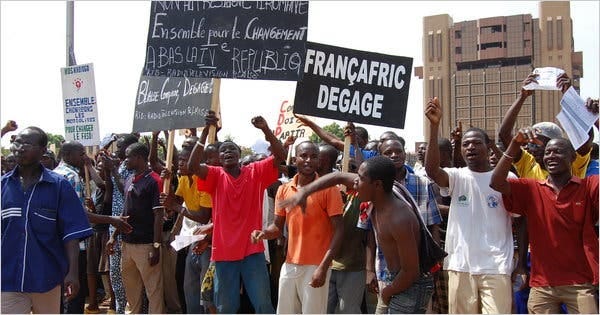



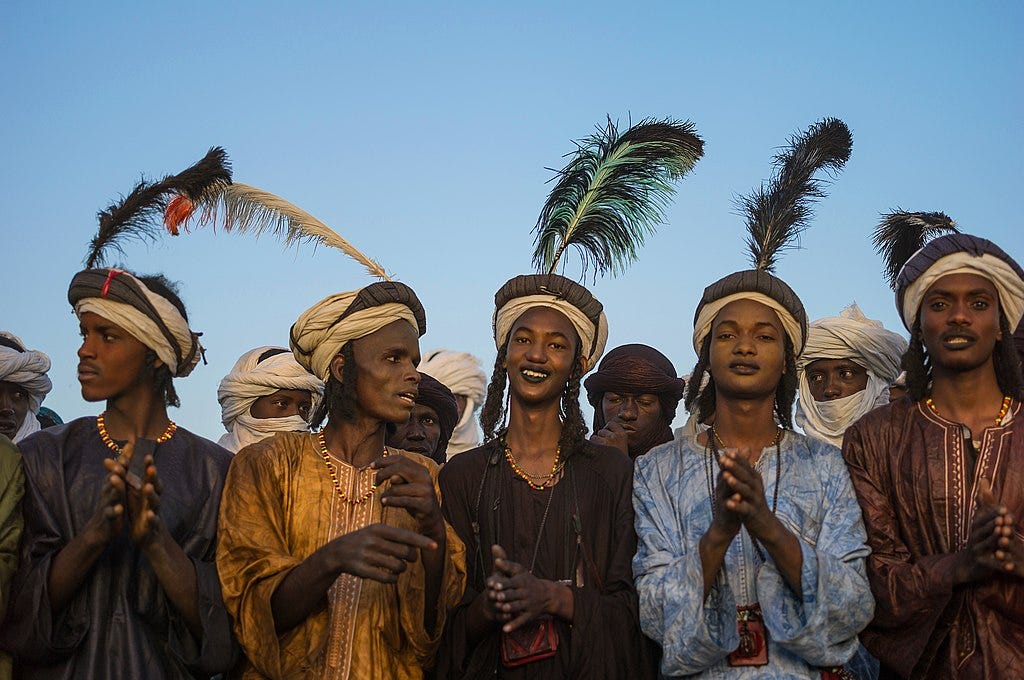

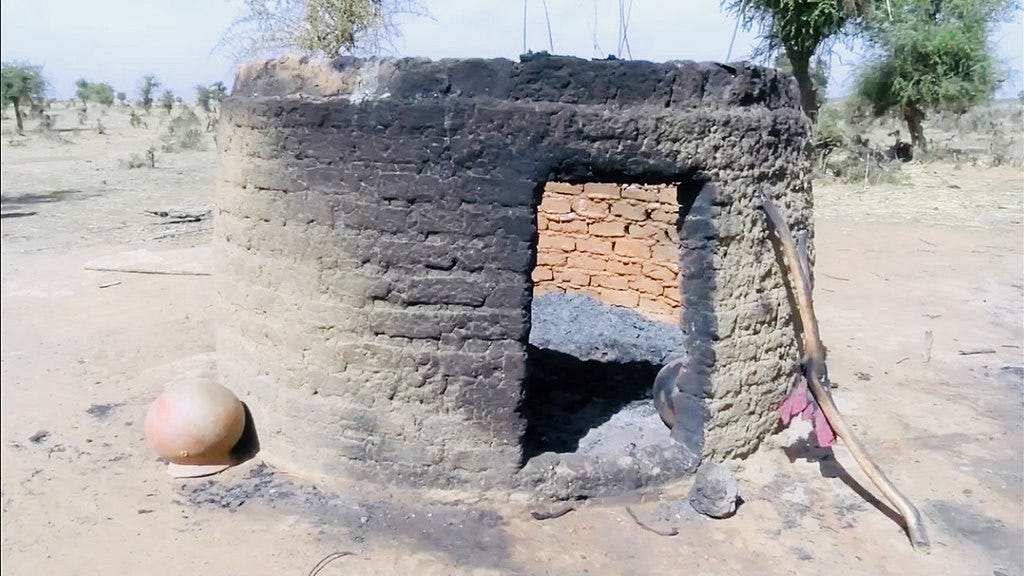

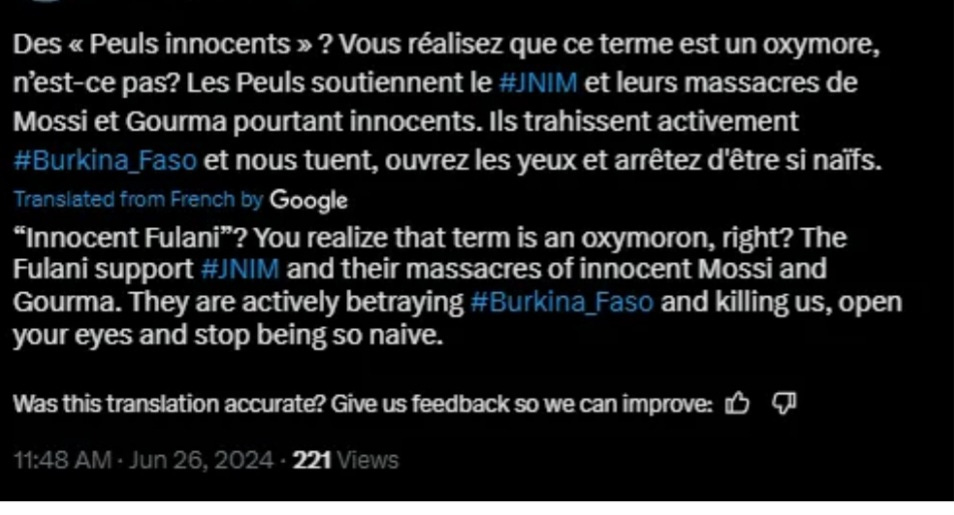
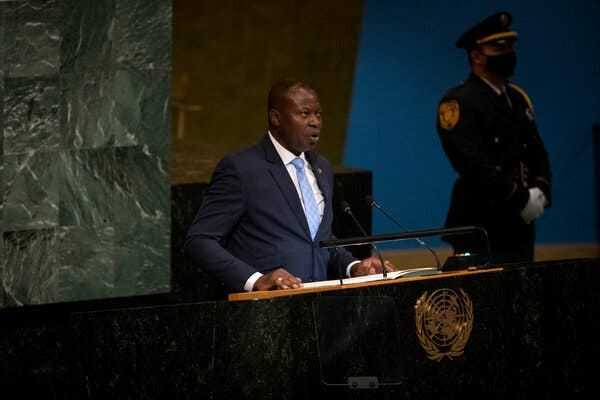





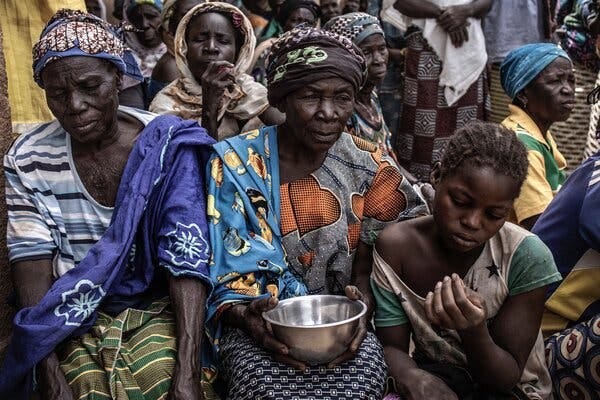
Thanks for covering this history and the current crisis. I have a friend in USA from Burkina Faso. He migrated in 2017 and has done well, but I fear for his family in Burkina Faso.
When you write about labor unions protesting in countries like Burkina Faso, which unions are these? There's not much of a secondary sector as you identify. Are they public sector unions?